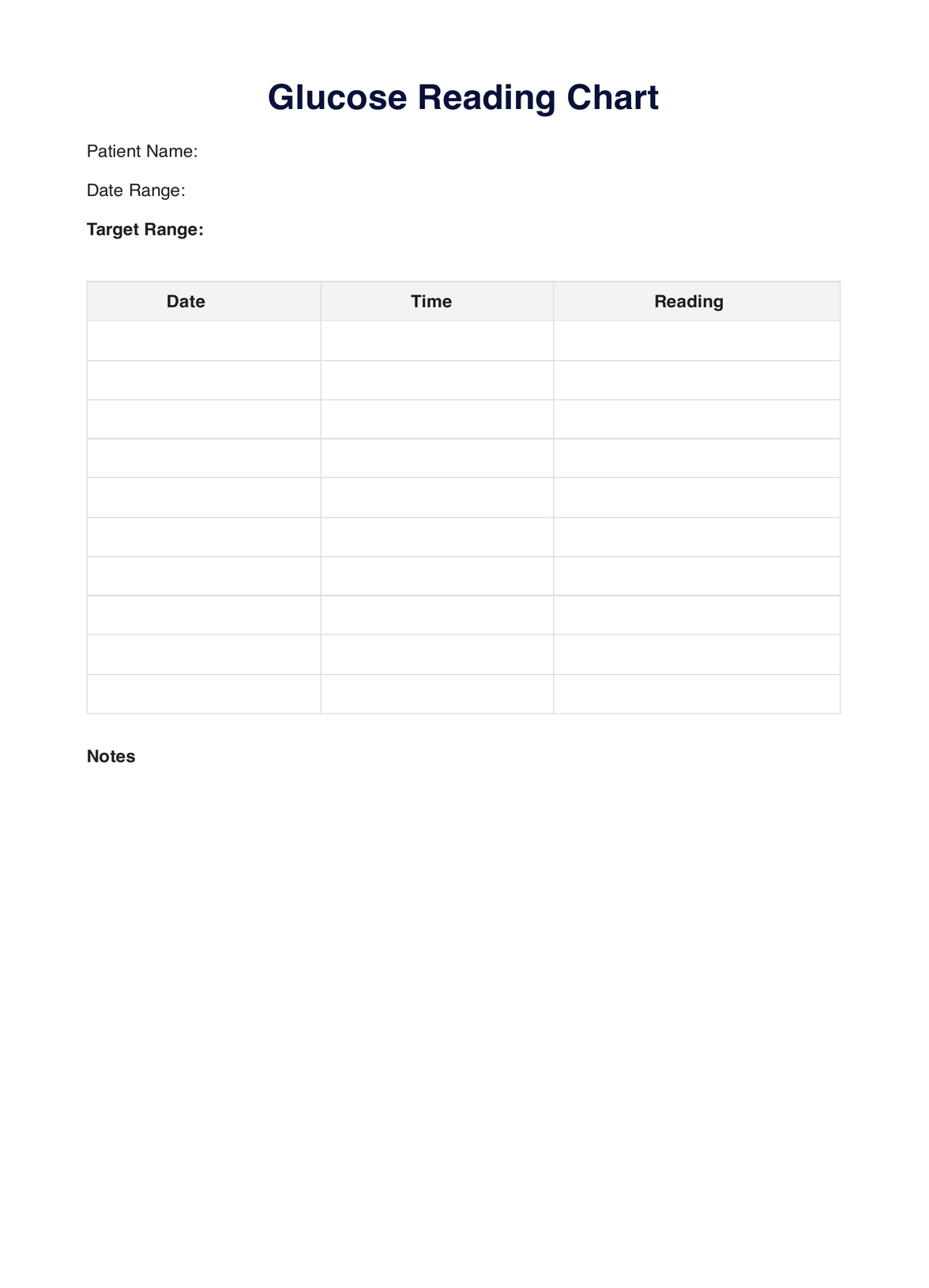Individuals with diabetes and healthcare professionals typically request Glucose Reading Charts.

Glucose Reading
Monitor and manage blood sugar with our Glucose Reading Chart. Track levels efficiently. Essential for diabetes care.
Use Template
Glucose Reading Template
Commonly asked questions
Glucose Reading Charts are used daily by individuals with diabetes to monitor blood sugar levels. They are also used during healthcare appointments to assess diabetes management.
Users record their blood glucose readings at specific times and note other relevant details on the chart, such as meals and medications. This data is then analyzed to adjust treatment plans and control blood sugar.
EHR and practice management software
Get started for free
*No credit card required
Free
$0/usd
Unlimited clients
Telehealth
1GB of storage
Client portal text
Automated billing and online payments











